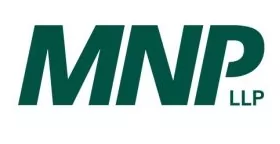A significant percentage of business owners have their net worth tied up in their company. While many of these owners have a need to create liquidity, they often prefer not to sell their business outright. There are many reasons an owner might seek liquidity from their business without having a desire to sell 100% of it, including diversification of wealth, family obligations, lifestyle decisions, estate planning considerations, succession of generational ownership while keeping an interest in the family, etc. Seeking out a third party investor is one way to achieve partial liquidity for these business owners, while also providing a potential upside for the future.
In these situations, private equity firms (PE firms) can make for good partners. Many PE firms have a preference for the business owner to retain a residual equity interest in the business. They believe the selling shareholders can play a critical role in the day-to-day management of the business and in achieving growth targets so that the ultimate exit strategy can be realized to the mutual benefit of both parties.
Typically, PE firms will provide capital to create partial liquidity for the existing business owners, additional capital to support growth initiatives, business oversight (often at the board level), industry expertise and contacts, etc. PE firms seek out businesses with a strong value proposition, including positive growing cash flows, a defensible competitive position and a breadth and depth of the management team.
That said, investment strategies can differ from one PE firm to the next, so it is important to make sure all parties' interests are aligned. Business owners will want to understand the following:
(1) Investment Horizon:
PE firms generally have a 5-to-7 year investment horizon. Select PE firms will provide 'patient capital' allowing for some flexibility in timing of the ultimate exit. This can be particularly favourable in the event of an unforeseen circumstance that has a short-term impact on value. However, other PE firms are more rigid and follow a strict investment horizon as dictated by their respective investment committee.
(2) Exit Strategy:
- Initial Public Offering (IPO);
- Sale to a strategic buyer; and
- Sale to another PE firm.
Each of these alternatives can impact the timing of the ultimate liquidity event. For example, under an IPO there will be a lock up period restricting an owner from selling their shares for a stated period of time (i.e. 180 days). Further, market liquidity, which refers to the market's ability to facilitate the sales of the shares quickly without resulting in a discount, could also be a factor. In addition, a sale to another PE firm could result in the need for an owner to once again transition the business and to help facilitate growth and often involve contingent consideration (i.e. earn-out), impacting the amount of cash received on closing.
(3) Financial Leverage
PE firms often increase the degree of financial leverage in the business so targeted equity returns can be realized. Increasing financial leverage can result in having to closely manage financial risk to ensure that sufficient cash flows are available to facilitate debt payments while dealing with restrictive banking covenants and the burden of additional reporting requirements.
(4) Growth - Organic versus Acquisitions
Expectations for organic growth can place significant pressure on the management team to perform, while growth through acquisition can result in dilution of ownership interests, assuming the business owner does not participate on a pro-rate basis in the call for additional capital.
(5) Majority versus Minority
Business owners often struggle with the concept of maintaining a control position versus a non-control position and understanding how that will impact their ability to impose their vision and strategic direction for the company as well as influence the day-to-day operations. Shareholders can seek the necessary protections of their right and privileges through a well-drafted shareholders agreement (S.A.) In addition to the standard clauses typically found in a S.A., like prevailing conditions under which a parties can put shares, call shares, rights of first refusal, drag along-tag along provisions dealing with the 'D' of life events (death, disability, divorce), valuation provisions, etc., a well-drafted S.A. can also specifically address the following:
- The ability to influence decision-making in the business; unanimous consent for major decisions impacting cash flows or the risk profile, i.e. bonuses, dividends, new business initiatives, etc.
- Representation on the board of directors; and
- Agreement on the ultimate liquidity event.
Reviewing a PE firms' past portfolio of companies and executed practices in those instances, including interviewing past business owners, can go a long way to providing the necessary insight into how a PE firm tends to operate. That said, sometimes it comes down to trust and fit from a cultural perspective as both parties must be willing to collaborate and work together post-transaction.
The content of this article is intended to provide a general guide to the subject matter. Specialist advice should be sought about your specific circumstances.


